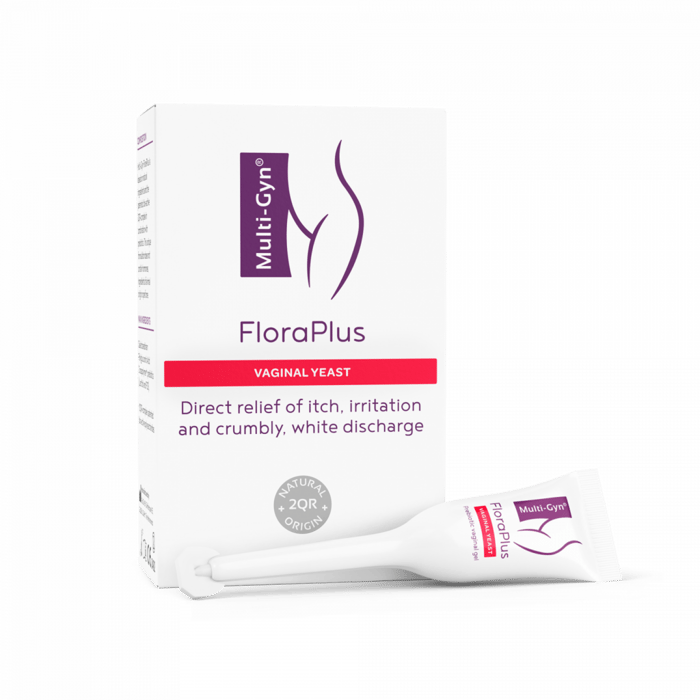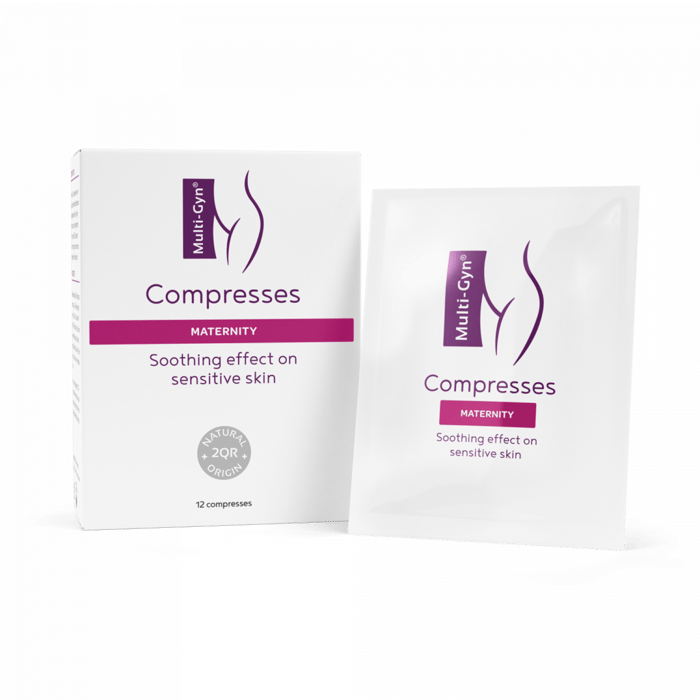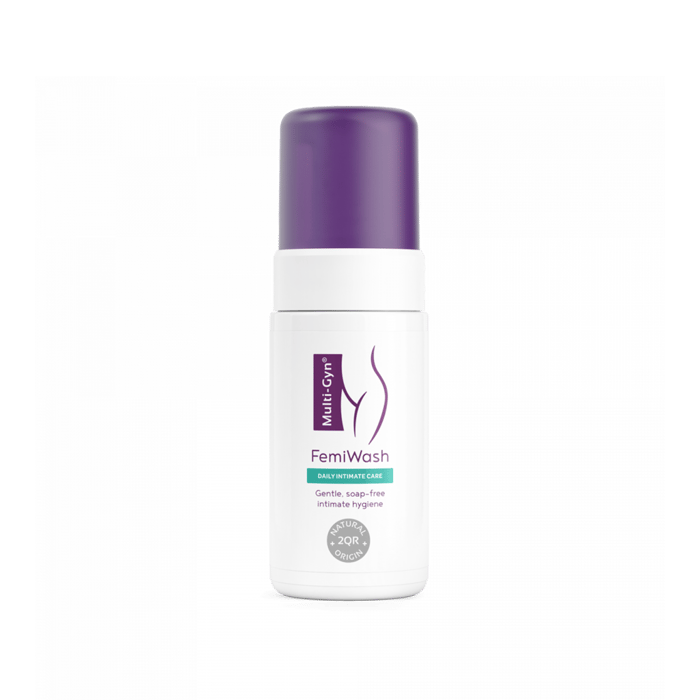Bacterial Vaginosis
Do you think you may have bacterial vaginosis?
The most common vagnial infection in women, bacterial vaginosis is caused by an overgrowth of naturally-occurring bacteria in the vagina.
Although unprotected sex can increase your risk of bacterial vaginosis, this infection is not a sexually transmitted disease.
Read on to find out everything you need to know about bacterial vaginosis, including:
Read on to discover:
What is bacterial vaginosis?
Bacterial vaginosis is an inflammation of the vagina that most commonly occurs when there is an overgrowth of multiple bacteria that are naturally found in your vagina.
Every vagina has both good and bad bacteria, but if there is too much bad bacteria, known as anaerobes, then the natural balance of the vagina becomes disrupted, and bacterial vaginosis bacteria (BV) can occur.
What are the most common bacterial vaginosis symptoms?
Bacterial vaginosis has many of the same symptoms as other infections of the vagina, so it can be difficult to self-diagnose. That being said, some of the most notable signs of bacterial vaginosis include:
- A thin, grey, white, or green discharge
- A foul-smelling, often fishy, odour
- Vaginal itching
- Burning during urination
As mentioned above, some of these symptoms can also indicate a yeast infection or a sexually transmitted infection such as chlamydia. However, bacterial vaginosis discharge is distinctively fishy, which can help with self-diagnosis.
What causes bacterial vaginosis?
As mentioned earlier, bacterial vaginosis is caused by an overgrowth of bad bacteria in the vagina, which can happen to any woman. However, there are certain risk factors that make you more likely to experience bacterial vaginosis.
The most common bacterial vaginosis causes are:
Multiple sexual partners
Although bacterial vaginosis is not considered to be a sexually transmitted disease, if you have multiple sexual partners, you are more likely to experience it. It is also more likely to occur when you have a new partner or if you have sex with other women.
Lack of good bacteria
Some women naturally have less of the good bacteria, known as lactobacilli bacteria, in their vagina. This means that they are more prone to bacterial vaginosis.
How to treat bacterial vaginosis
Sometimes bacterial vaginosis can go away on its own without the need for treatment. However, as bacterial vaginosis symptoms can often be annoying, treatment can help to relieve these symptoms.
If you are diagnosed with BV, the most likely treatment will be a course of antibiotics. Many women have been helped by effective over-the-counter treatments as well. The downside with antibiotics is that they wipe out both beneficial and harmful bacteria in the vagina, which disrupts the bacterial balance and increases the risk of getting another infection.
You could start by using a over-the-counter natural vaginal gel to treat bacterial vaginosis, an alternative to antibiotics that supports the good bacteria like Multi-Gyn Actigel.
Treat without antibiotics
The downside with antibiotics is that they wipe out both beneficial and harmful bacteria in the vagina, which disrupts the bacterial balance and increases the risk of getting another infection. Unfortunately, as many as half of all infections recur within 12 months, despite treatment.
To treat infections of bacterial vaginosis naturally, you may want to try an over-the-counter product as an alternatives to antibiotics, such as Multi-Gyn ActiGel. Alternatives to antibiotics that supports the good bacteria and offers instant relief from bothersome BV symptoms.
Metronidazole
Metronidazole is the most commonly prescribed antibiotics to treat BV. Typically, this antibiotic needs to be taken twice a day for 7 days. In some cases, a metronidazole gel may be prescribed which is applied to the vagina for 5 days.
It is important to know that metronidazole reacts very badly with alcohol and may cause unpleasant side effects such as nausea and vomiting.
Clindamycin
If metronidazole is not effective or you would prefer to try a different antibiotic, your GP may prescribe clindamycin. This may be prescribed in tablet form, which is taken twice a day for 7 days, or in the form of a gel that is applied to the inside of the vagina for 7 days.
Tinidazole
Tinidazole is another antibiotic that can be used to treat BV if metronidazole doesn’t work or if reinfection occurs. Typically, this is taken in either a 2g oral dose once a day for 2 days or in a 1g dose once a day for 5 days.
What happens if bacterial vaginosis is left untreated?
In most cases, you will not experience any bacterial vaginosis complications, although it can be unpleasant. However, in rare circumstances, untreated BV can lead to:
- An increased risk of catching sexually transmitted infections such as HIV, chlamydia, and gonorrhoea
- Pelvic inflammatory disease (PID), which is an infection of the uterus and fallopian tubes
- Premature deliveries and low birth weight babies in pregnant women with BV
- Difficulty conceiving
- An increased risk of developing a post-surgical infection after procedures such as a hysterectomy or dilation
Do I need to see a doctor to diagnose bacterial vaginosis?
If you suspect that you have bacterial vaginosis for the first time, it might be a good idea to see your GP or visit your nearest sexual health clinic for an official diagnosis. This is because bacterial vaginosis symptoms can mimic those of a yeast infection and some sexually transmitted diseases.
You can also purchase kits that test for bacterial vaginosis. These are particularly useful if you are unsure about whether you have a yeast infection vs. bacterial vaginosis.
If you have recently had unprotected sex with a new partner and detect bacterial vaginosis symptoms, then you should book an appointment with your local sexual health clinic for a full sexual health screening.
At-risk groups
- Pregnant women
- Smokers
- Women taking antibiotics
- People with multiple sex partners or new sex partners
- People with natural lack of lactobacilli bacteria
What are the home remedies for bacterial vaginosis?
Although Bacterial Vaginosis specific products such as Multi-Gyn Actigel or antibiotics are the recommended treatment for most cases of bacterial vaginosis, there are also several home remedies. Please note that these remedies are not scientifically proven.
A probiotic supplement
One of the home remedies for BV is to take a probiotic supplement, as these can help to introduce more good bacteria into your body.
If you already have BV, a probiotic can help to treat your symptoms and reduce the risk of future infections.
If you are taking antibiotics for BV, it is worth knowing that these can kill off both the good and bad bacteria in your vagina. However, by supplementing with a probiotic, you can replace some of the good bacteria and improve your vaginal health.
Garlic
Garlic has antibacterial properties and has been used as a home remedy for bacterial vaginosis for a long time.
Boric acid
Boric acid suppositories can be used as a home remedy for BV. However, it is unlikely to be able to treat BV on its own.
How to prevent bacterial vaginosis
You can take several steps to reduce your risk of experiencing bacterial vaginosis or preventing reinfection. These include:
- Using a condom during sex
- Avoid a sexually transmitted infection
- Use mild, non-deodorant wash to clean the external intimate area
- Avoiding perfumed bath products
- Not using vaginal deodorants
- Washing your underwear with gentle detergent
- Stopping smoking
Bacterial vaginosis FAQs
How do you get bacterial vaginosis?
Bacterial vaginosis is caused by an overgrowth of bad bacteria in your vagina. It is not a sexually transmitted infection, but it is more common in women with multiple sexual partners or those with a new sexual partner. It is also more common in women who have sex with women and those who use scented bath products.
What does bacterial vaginosis look like?
The Bacterial vaginosis discharge colour varies, but typically it results in a white, grey, or green vaginal discharge that often has a strong fishy odour. You may also experience other symptoms such as vaginal itching and bacterial vaginosis burning during urination.
Can bacterial vaginosis cause bleeding?
Bacterial vaginosis bleeding is not a symptom of this infection, so if you do notice any unusual bleeding between your periods, then BV may not be the cause, and you should make an appointment with your doctor to be certain.
Is bacterial vaginosis contagious?
Bacterial vaginosis cannot be passed from a woman to a man or vice versa, as only women can get BV. However, if you have sex with women, you can pass BV on to one another. Sex can also make bacterial vaginosis symptoms in women worse.
Is bacterial vaginosis an STD?
No, bacterial vaginosis is not an STD, although it can be sexually transmitted between women, and being sexually active can increase your risk of getting a BV infection.
Can men get bacterial vaginosis?
No, men cannot get bacterial vaginosis as it is an infection of the vagina. Men can also not pass on bacterial vaginosis to women and vice versa.
Does bacterial vaginosis go away?
In some cases, bacterial vaginosis can go away on its own. However, usually, your GP or sexual health practitioner will recommend a course of antibiotics or acidic gel. If you experience recurring BV, please contact your doctor.
Can you have sex with bacterial vaginosis?
Yes, you can have sex with bacterial vaginosis, but this may make your symptoms worse, especially bacterial vaginosis itching. If you are having sex with a woman, then you should stop having sex until you have finished your treatment, as you can pass BV back and forth from one another. This can lead to recurring BV.
Can bacterial vaginosis cause pain?
Bacterial vaginosis can cause abdominal pain or discomfort, especially untreated bacterial vaginosis. You may also notice the bacterial vaginosis smell is fishy.
How long does bacterial vaginosis last?
Most bacterial vaginosis treatments last for 7 days, and the infection should clear up within this time. However, it is common for bacterial vaginosis to come back, usually within three months of treatment.
How to test for bacterial vaginosis?
The easiest way to test for bacterial vaginosis is to book an appointment with your GP or visit your local sexual health clinic. A bacterial vaginosis test is simple and involves a cotton bud being wiped over the discharge inside your vagina.
You can also purchase test kits online for bacterial vaginosis, but these will not test for other infections such as chlamydia or gonorrhoea.








